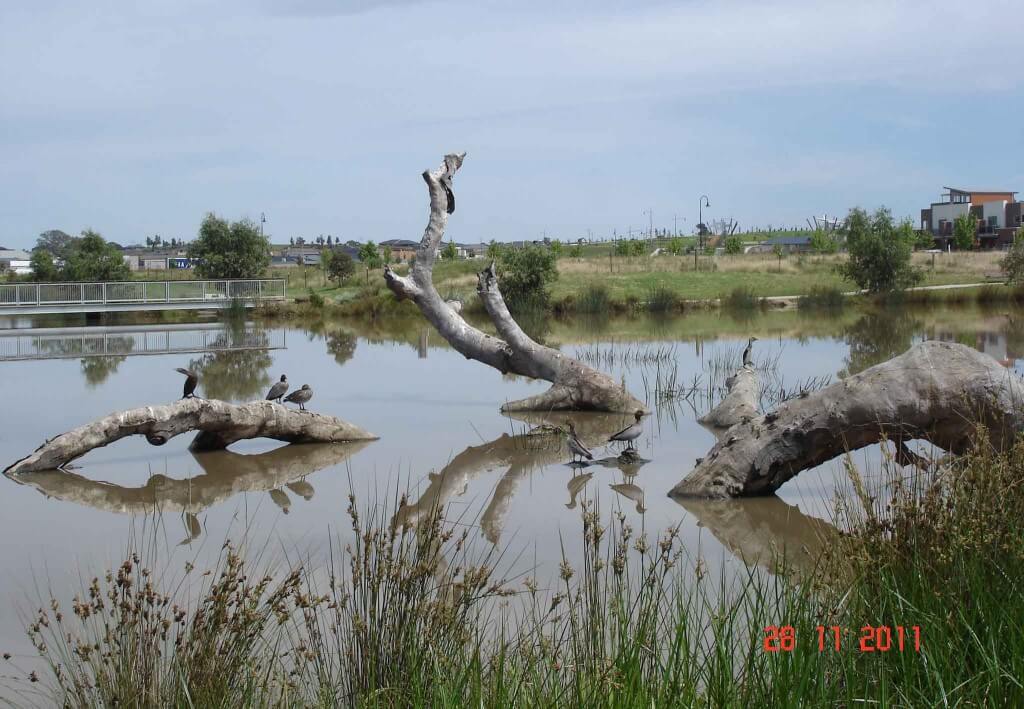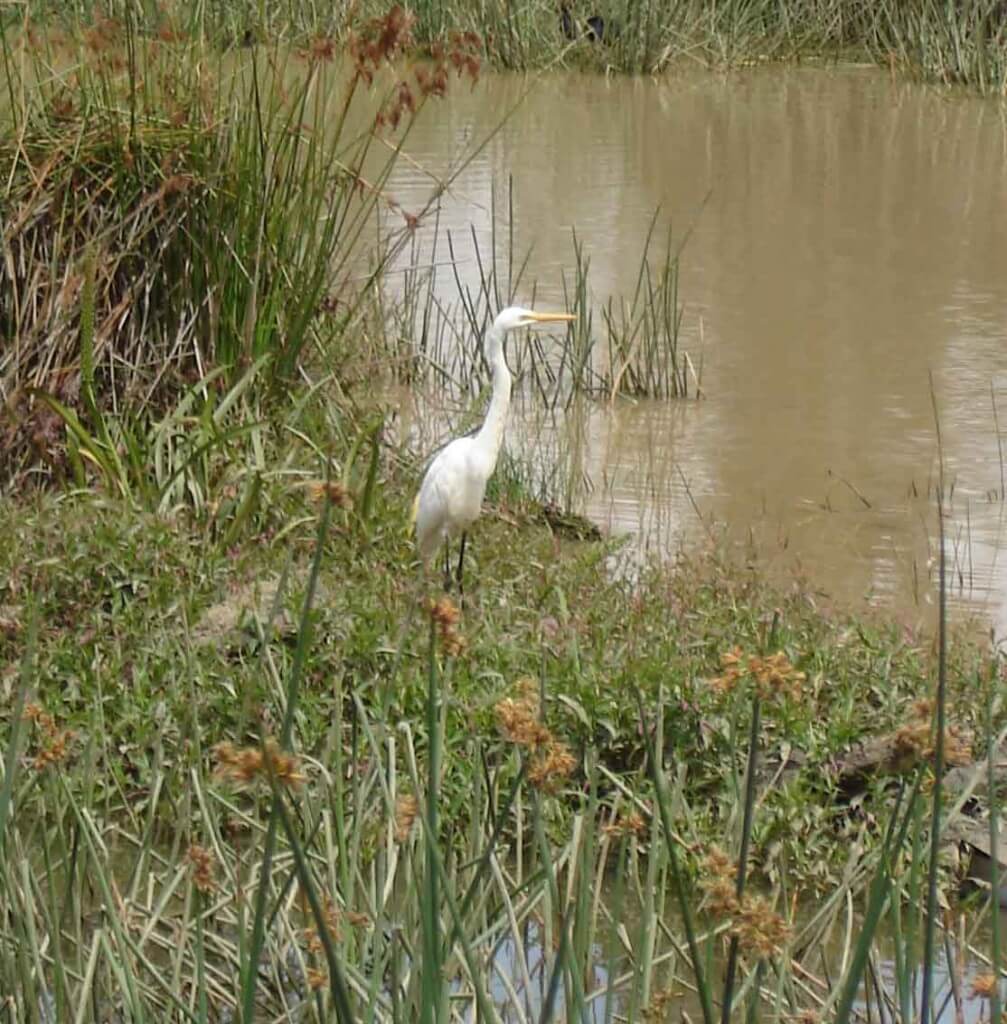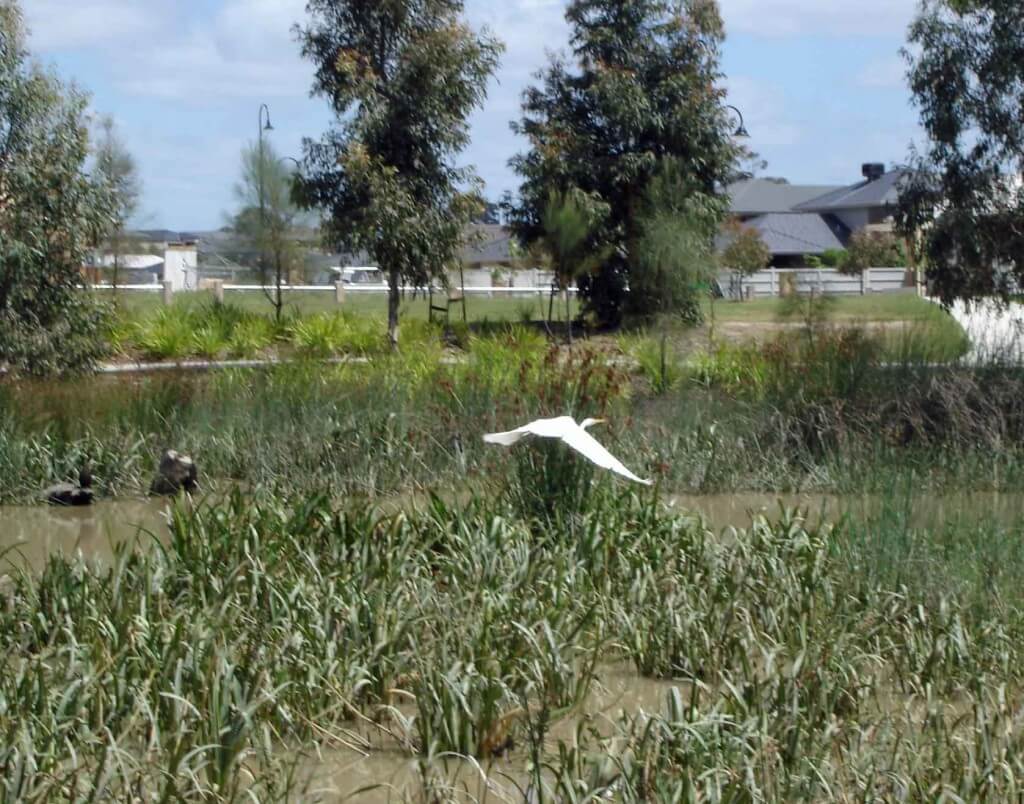Habitat area for the Great Egret
A recent visit to Melbourne found me in the new outer suburb of Doreen again, where a significant area of artificial ponds and walkways are featured in the development. Large areas of reed beds and water weeds provide food and shelter for wild birds and other wildlife. Many water birds frequent the area including the Great Egret – a distinctive white bird, as well as native ducks, darters, cormorants and a family of black swans.
An elegant white bird
The Great Egret is a very elegant white bird, standing up to 1 m (3.3 ft) tall, with a long neck, yellow spear like beak and long black legs. The Egret feeds in shallow waters, sometimes stalking its prey along the marshy edges, before jabbing its deadly spear like beak, with one swift thrust into its hapless prey. This is then followed by the Egret carrying out a number of gulping motions, its neck a series of convoluted curves, as it attempts to swallow its prey.
The Great Egret repeats the gulping motions a few times, until it finally succeeds in passing its catch down the curves of its long thin neck. The diet of this great white bird consists mainly of fish, frogs and small mammals. It feeds in shallow water and sometimes adds small reptiles and insects to its diet.
A graceful white bird in flight
The Great Egret is a very graceful white bird in flight, with a wingspan of 131 to 170cm. It breeds in colonies in tree tops, close to lakes with reed beds, or other wetland areas that offer suitable protection and breeding sites. The nest is a large platform of sticks placed in a tree over the water. Both sexes construct the nest, incubate the eggs and care for the young. The egret usually lays 2-6 eggs in the breeding season (October to May). Hopefully I will see this elegant white bird again on my visits to Doreen.
Birds of Australia: Eighth Edition (Princeton Field Guides)
The Slater Field Guide to Australian Birds: Second Edition
The Complete Guide to Finding the Birds of Australia




I actually saw one of these birds while on a travel vacation to Los Angeles, of all places. It was completely a surprise, given that LA is a huge, polluted and noisy metropolis. I first thought I was seeing things. It was perched at the edge of a drainage system (a city-like concrete creek) that leads to the jetty in Marina del Rey and finally empties out into the ocean. I was on my bike because there’s a bike path that meanders along the creek. It stood out like a sore thumb because if was lily white agains the gray concrete and blackish, murky water. It did make me realize that wildlife exists and is to be found in the most unexpected places. It made me appreciate that city more.
Hi Chloe, Always a pleasant surprise when you find unexpected wildlife in the big cities. Reminds one just how amazing nature is! Thanks so much for your comment.Lyn
Gorgeous! The travel blogs I follow are always about the hustle and bustle of the traveler’s life. Very few posts stop and admire just one thing as carefully as you’ve done with the Egret. Beautiful pictures. Thank you 🙂
Hi Carol, I love to travel, and I love nature so there is always something to see and enjoy along the way. thanks for your comment. Lyn
What an awesome bird. Nice picture. Just bookmarked your blog, I find it very interesting.. Great job..
Hi Kevin, Does the Great Egret migrate to the UK. Thanks for your comments. Lyn
Great..nice bird..Well the great egret is a member of the heron family. All egrets are a subspecies of the heron family, so calling a Great Egret, which is white, a “white egret” is correct but perhaps misleading.
So, should this bird be called a heron? In Ancient Chinese and Japanese art they refer to it as white Heron and it looks like a Great Egret?